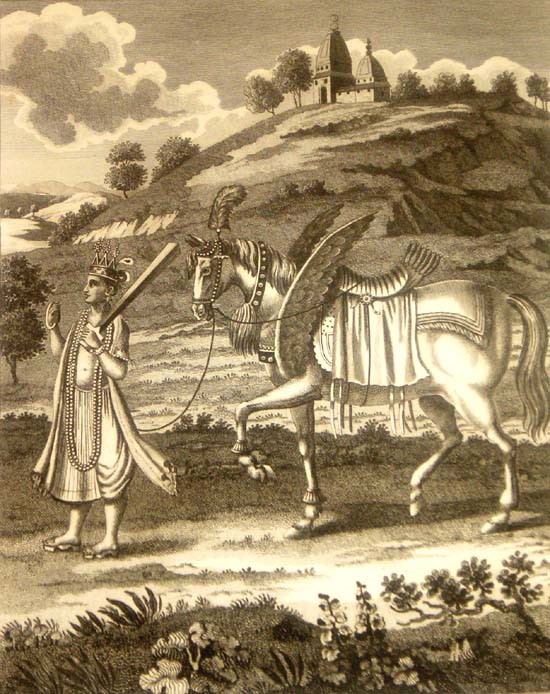Kalki Purana
The Kalki Purana (IAST: Kalki purāṇa) is a Vaishnavism-tradition Hindu text about the tenth avatar of Vishnu named Kalki. The myth-genre Sanskrit text was likely composed in Bengal during an era when the region was being ruled by the Bengal Sultanate or the Mughal Empire. Wendy Doniger dates it to sometime between 1500 CE and 1700 CE. It has a floruit of 1726 CE based on a manuscript discovered in Dacca, Bangladesh.
The extant text exists in many versions, which vary in structure and details. Some do not divide the text into sections and have about 35 chapters, others have three aṃśa (sections) with the first containing 7 chapters, second section another 7, and the third with 21 chapters. It is not one of the 18 Maha-Puranas (great Puranas), and is counted as an Upapurana or secondary Purana.
The text is a Vaishnavism tradition text, where Brahma and other gods approach Vishnu for protection from the evils of the Kali-yuga. After listening to stories of persecution, Vishnu promises to be born as Kalki in the family of Sumati and Vishnuyasha, in a village called Shambhala. He studies the Vedas and other texts, then marries a princess named Padmavati of Simhala kingdom. Kalki and his army then fight various wars and destroy all those who had persecuted and driven Hindu dharma out of their land. After the annihilation of the evil and restoration of the good, Kalki returns to Shambhala. This marks the end of Kali yuga, and the start of the new cycle of existence, with Satya yuga (also called Krita yuga). Kalki then returns to heaven, according to Kalki Purana.
According to Edwin Bernbaum, the Kalki Purana is a Hindu version of Shambala and its mythology has many features found in the Buddhist counterpart. Other scholars agree that Buddhists borrowed the Hindu concept of Kalki and implemented in Kalachakra The Buddhist texts also mention a king named Kalki from Shambhala who leads an army to destroy the persecutors of dhamma; then after the victory of good over evil and attainment of religious freedoms, Kalki ushers in a new era. The Buddhist text is dated to about the 10th-century.
